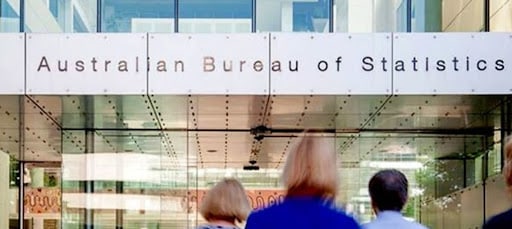
Housing remains one of the biggest drivers of rising price levels, but annual inflation is still within the central bank’s target range, according to new data.
The monthly Consumer Price Index (CPI) indicator has been released by the Australian Bureau of Statistics (ABS), revealing that the annual inflation rate was 2.4 per cent in the 12 months to February.
The national statistics agency’s monthly figures also showed that the annual trimmed mean, a measure of underlying inflation (which reduces the impact of irregular or temporary price changes), was 2.7 per cent in February, down from 2.8 per cent in January.
The largest contributors to inflation were food and non-alcoholic beverages (3.1 per cent), alcohol and tobacco (6.7 per cent), and housing (1.8 per cent).
However, housing inflation – which includes rents, new dwelling purchases, electricity and gas, and household fuels – dropped from 2.1 per cent in the year to January 2025, easing 0.3 per cent over the month.
Annual trimmed mean near RBA target midpoint
The annual trimmed mean of inflation – one of the figures the Reserve Bank of Australia (RBA) is most interested in when setting the official cash rate – eased to 2.7 per cent in February, down from 2.8 per cent in January.
That figure is within the RBA’s target inflation band of 2–3 per cent and approaching the 2.5 per cent midpoint.
In the minutes of the February 2025 RBA board meeting, the central bank flagged easing inflation, along with slowing wage growth, as the two major reasons behind its long-awaited decision to cut the cash rate for the first time since November 2020.
Commenting on the new figures, Treasurer Jim Chalmers said that the headline result was “below the median market expectation” and that headline inflation “has been at or below the midpoint of the Reserve Bank’s target band for six consecutive months”.
“Underlying inflation has been below three per cent for three consecutive months,” he said.
“This is even more proof that inflation continues to moderate in our economy. We know that these monthly numbers are volatile and can bounce around but the direction of travel on inflation is clear.”
What does the February data mean for the cash rate?
While the monthly CPI figures only include some of the full CPI basket data, they provide a good indicator of what the quarterly CPI data (which is a key consideration used by the RBA’s monetary policy board when it meets to determine the cash rate) may look like.
All four major banks expect the central bank will keep the cash rate on hold at its cash rate decision next Tuesday (1 April), with some calling the next rate drop in May.
- Commonwealth Bank (CBA) economists said they do not expect the RBA to deliver rate relief at its April meeting, but that the latest inflation data left them “with a higher conviction for a May rate cut”.
- Westpac also forecasts the next rate drop to be in May, with a total of three more times this year, bringing the rate to 3.35 per cent.
- National Australia Bank (NAB) believes the next rate cut will take place in May, followed by August and then possibly November. It expects the cash rate to be 3.1 per cent by February 2026.
- Australia and New Zealand Banking Group (ANZ) predicts one more cut in August, taking the cash rate to 3.85 per cent.
The senior economist at ANZ, Adelaide Timbrell, said that February inflation had come in below the lender’s expectations for the month.
“The RBA is likely to look through this slight drop in the headline and may find the monthly trimmed mean result encouraging for disinflation progress but only at the margin,” Timbrell said.
CBA senior economist Stephen Wu said: “[The] data gives us more confidence the underlying inflation pulse remained relatively benign.
“There was once again better news on housing inflation, with new dwelling costs in deflation and recording its third monthly price fall in the past four months.”
Westpac Group chief economist Luci Ellis said the next release of the quarterly inflation data will be crucial: “So much is hanging on that difference between 2.7 per cent and 2.5 per cent that even a small downside surprise for the RBA on trimmed mean inflation in the March quarter will cement our current view on the timing and scale of further cuts.”
Speaking about what would influence RBA decision making, Ellis said: “The labour market, wages, consumption and trimmed mean inflation are all crucial for the path beyond that.”
The RBA Monetary Policy Board is scheduled to meet next week (on 31 March and 1 April), with the cash rate decision announced on 1 April.
[Related: RBA minutes reveal little appetite for further rate cuts]
 Login
Login










JOIN THE DISCUSSION